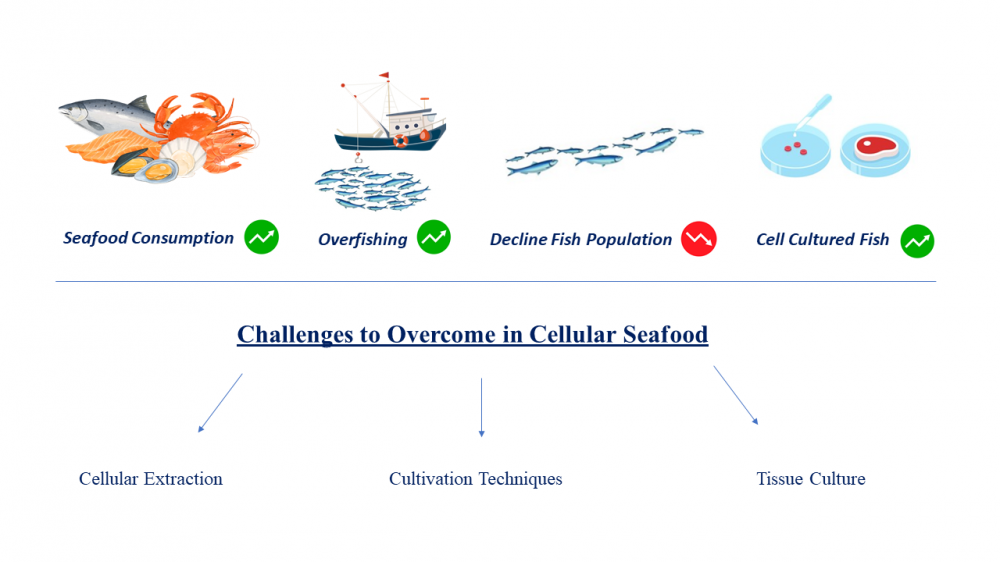JOURNAL 3114
Records of Agricultural and Food Chemistry
Year: 2024 Issue: 3 Special Issue: Abstracts 3rd. TCS, International Food Chemistry Congress February 29-March 03,2024 Antalya Türkiye
p.75 - 75
Viewed 772 times.
GRAPHICAL ABSTRACT

ABSTRACT
Worldwide, seafood accounts for nearly 20% of annual animal protein consumption, and its production is critical to ensure global food and nutrition security. The increase in seafood demand has resulted in overfishing and caused a decrease in aquatic species. Aquaculture or fish farming, includes breeding, growing, and harvesting fish and aquatic products in a controlled environment; It is the first solution to overfishing. To supply sufficient seafood for the growing demand, the alternative seafood industry provides promising opportunities. Cell-based seafood refers to seafood that is produced using cell and tissue culture without sacrificing the animal. This method, called cellular agriculture, has been adopted from regenerative medicine that uses advanced cellular extraction and cultivation techniques of fish cells and tissue culture. To serve as a credible alternative to traditional seafood, cellular seafood should be efficiently produced and should mimic meat in all of its physical sensations, such as visual appearance, smell, texture and of course, taste. The efficient culture of cells used for production of cellular seafood primarily depends on stem cells, cell culture conditions including incubation temperature and medium composition. Many of these variables are known and optimized for each production line, but their interactions are numerous and need to be optimized. Overall, this review underscores the importance of further research in cell culture to advance the field of cultured seafood and promote sustainable seafood production.
KEYWORDS- Cellular seafood
- stem cells
- seafood alternatives
- cell culture
SUPPORTING INFORMATION
Cellular Seafood: Current Challenges to Overcome in The Development of Cellular Seafood
Worldwide, seafood accounts for nearly 20% of annual animal protein consumption, and its production is critical to ensure global food and nutrition security. The increase in seafood demand has resulted in overfishing and caused a decrease in aquatic species. Aquaculture or fish farming, includes breeding, growing, and harvesting fish and aquatic products in a controlled environment; It is the first solution to overfishing. To supply sufficient seafood for the growing demand, the alternative seafood industry provides promising opportunities. Cell-based seafood refers to seafood that is produced using cell and tissue culture without sacrificing the animal. This method, called cellular agriculture, has been adopted from regenerative medicine that uses advanced cellular extraction and cultivation techniques of fish cells and tissue culture. To serve as a credible alternative to traditional seafood, cellular seafood should be efficiently produced and should mimic meat in all of its physical sensations, such as visual appearance, smell, texture and of course, taste. The efficient culture of cells used for production of cellular seafood primarily depends on stem cells, cell culture conditions including incubation temperature and medium composition. Many of these variables are known and optimized for each production line, but their interactions are numerous and need to be optimized. Overall, this review underscores the importance of further research in cell culture to advance the field of cultured seafood and promote sustainable seafood production.
Download File OKTopuz_ cell_RAFC_3rd_Food_Chemistry_Abastract - Kopya.docx (101.04 KB)